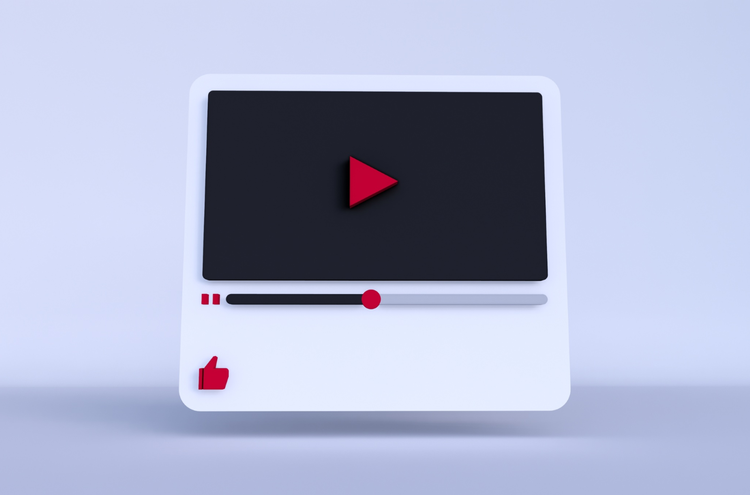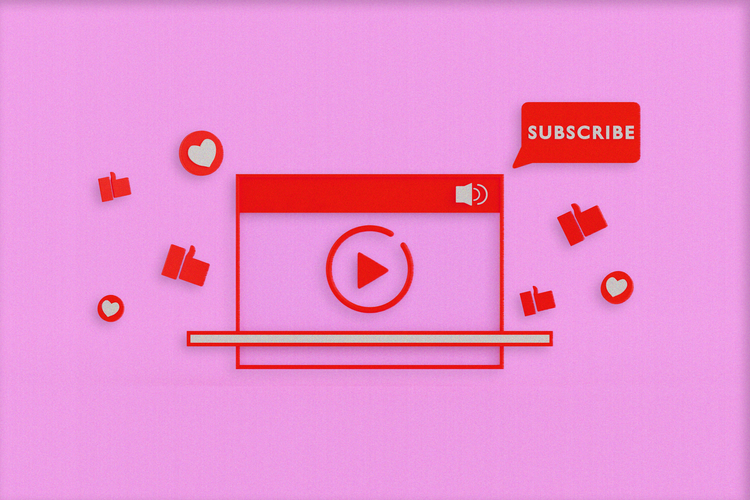Instagram vs YouTube: which leading video platform is right for you?
Whether you’re a business or an influencer, find out whether Instagram or YouTube is a more suitable platform for you.
Summary/Overview
Instagram and YouTube are two of the strongest and most popular social media channels, and the visual nature of their content is a big part of why that is. Video content, whether it be short-form or long-form, is a hugely popular medium and an incredibly powerful marketing tool.
Although Instagram and YouTube are both known for being big on video content, there are some differences between the two platforms, and one might suit your needs better than the other. Join us to discover how Instagram and YouTube compare to each other, and which platform is right for you.
Instagram vs YouTube: Your content
Although whatever content you intend to create can work on either platform, there are specific types of content that are more commonly found on one platform over the other. Because YouTube content can be a lot longer than Instagram video content, content that is instructional or more detailed might be better suited to YouTube — such as how-to videos or in-depth conversations. While this content can also work on Instagram, it would need to be edited differently to be snappier, more brief, or faster paced.
In terms of style, Instagram is often a place where more polished and professional-looking content resides, while YouTube — though home to plenty professional and polished content too — is typically the platform with more amateur-looking (albeit authentic), un-polished content, such as vlogs.
In essence, Instagram is the leading lifestyle social media platform, and YouTube remains the top channel for how-to videos and tutorials, so the type of content you intend to create can very much reveal which platform may be better suited to your style.
Create impactful videos instantly with the Adobe Express free video maker.

Instagram vs YouTube for business
If you’re a business assessing whether Instagram or YouTube is the best place for your video content, then there are a few elements you’ll need to consider. The first and probably most key consideration is to find out on which of the two platforms your audience or target market spends the most time. YouTube’s biggest user demographic is Gen Z and Millennials. However, the platform is also incredibly popular among all age groups with users spanning as young as 15 all the way up to those in their 80s and beyond. As for Instagram, Millennials and Gen Z are also the platform’s primary audience.
Furthermore, different industries tend to flock to one platform more than the other. For Instagram, industries such as fashion, food, travel, beauty, and real estate are most likely to thrive on this platform, while YouTube is most appropriate for B2B brands and the tech industry.
Create YouTube video clips for free in minutes with Adobe Express.
Another factor to consider is the shareability of your content once it has been published to either Instagram or YouTube. It’s worth noting that Instagram content is not typically shared outside of the app — any content-sharing typically happens within Instagram via DMs. However, YouTube content is widely sharable and can also be SEO-optimized to appear in search engines, creating huge potential for discoverability for any brand looking to grow.
All marketers understand the importance of having detailed social media analytics to understand how to grow their channels. Because YouTube is a platform for exclusively video content, it’s arguable that their analytics offer a lot more detail, even revealing insights into which exact points in your video users stop watching. While Instagram analytics are also useful, the data available is applicable to all content types on the platform and therefore doesn't offer as much specific insight on specifically the video content.
When we compare Instagram and YouTube for business, it’s important to also consider the features that exist for marketing purposes on each platform. For example, YouTube allows you to add clickable buttons and links throughout your videos. In contrast, Instagram will allow you to add buttons to your profile to allow people to click to contact, view your website, or go to your Instagram Shop, though clickable URLs can’t be added to your organic content.
YouTube vs Instagram for advertising
As with marketing in general, it’s important to advertise and place your focus where your target market spends its time. While it’s worth noting that the cost for Instagram ads hovers between $0.70 to $1 per click on average, and the average cost per view of a YouTube ad is between $0.010–$0.030, this data needs to be taken with a grain of salt. Results and costs will, of course, vary based on content format, placement, and industry.
Both platforms offer a variety of ads from which to choose for your brand or business.
YouTube offerings:
- In-feed video ads: Thumbnail image from your video + text placed in areas of discovery such as next to related videos, in search results, or on the mobile homepage.
- Skippable in-stream video ads: Commercials you can skip after five seconds that appear before the main content
- Non-skippable in-stream video ads: Commercials you cannot skip that appear before the main content
- Bumper ads: Short-form video ads that appear before or in the middle of a YouTube video
- Outstream ads: Videos that appear on websites and apps running on Google video partners
- Masthead ads: Auto-play video placed at the top of the YouTube home feed (must be reserved through a Google sales representative)
Instagram offerings:
- Photo or image ads (single photo ads)
- Carousel ads (multiple photo ads)
- Slideshow ads, showing a video slideshow
- Collection ads, which show a collection of photos in one view
- Video ads, which can be no longer than 60 seconds
- Story ads: Ads that appear within Stories
- Messenger ads:
- Playables, offering an interactive preview

YouTube vs Instagram for influencers
While some would say that the concept of a social media influencer was born on YouTube, it’s arguable that Instagram is now the most prominent place for influencers to thrive. It’s worth noting that Instagram’s variety of content can allow a user to consume a large amount of content in a brief period of time, allowing users to form connections and bonds with influencers quicker than they might on YouTube. As YouTube content tends to be more long-form (although short-form content is available too), a user might need more time to consume a decent amount of an influencer’s content before feeling connected to the creator.
Due to the variety of content formats available on Instagram versus that of YouTube, there may be more varied opportunities to work with brands on Instagram as opposed to YouTube.
YouTube vs Instagram for monetization
YouTube and Instagram have a range of options when it comes to monetization. For YouTube, all Creators have access to the “Earn” tab within the YouTube Creator Studio to help with creating and selling merchandise, advertising, and channel memberships. You can also use your YouTube content to create sponsored content or promote products as a brand affiliate.
When it comes to Instagram, you can monetize your content through all the same methods listed above (minus channel membership). However, one notable thing about Instagram is the ability to set up an Instagram Shop. This will allow you to sell products directly from within the app, bridging the gap between browsing and purchasing.
Instagram also allows you to earn money as a Creator through Instagram live badges. This feature allows viewers to purchase a badge during your live stream with the profits going straight to you, a particularly beneficial feature for influencers and creators alike.
YouTube Shorts vs Instagram Reels
YouTube Shorts took some time to catch on when the format was first introduced, but Shorts as a vehicle for content is now rising swiftly in popularity, with many creators finding YouTube Shorts beneficial to hook new viewers and push them towards their longer-form content.
Reels, on the other hand, has been thriving as a vehicle for short-form video content for some time, particularly as the Instagram algorithm continues to favor this content format and releases new features to encourage users to make even more Reels (such as the introduction of Reels templates).
As both platforms are seeing success with short-form content, it’s worth trying Shorts and Reels to see which platform works best for you. However, Reels has been around longer and therefore has more advanced editing tools for now.
Bring your Instagram Stories, Reels, or posts to life with an animated character made for free with Adobe Express.

YouTube Stories vs Instagram Stories
Stories can be a great way to give your audience a little more insight into your day-to-day life, with influencers commonly using the feature to share their thoughts, feelings, and what they’re currently up to in real time. The ephemeral nature of this content is especially enticing as it encourages people to view your Story before it disappears forever.
Instagram Stories are great for influencers and brands and come with a lot of features that can enable further connection between an account and its audience, such as Q&A stickers or polls. As YouTube Stories are currently in Beta, there are not as many features or stickers available yet, plus the feature is only available to those with more than 10,000 subscribers (unlike Instagram Stories, which are available to everyone). YouTube Stories also last for seven days, while Instagram Stories last for 24 hours.
Instagram vs YouTube FAQs
What happened to IGTV?
In October 2021, IGTV was scrapped as a content format. You can still publish longer videos to Instagram, but they now appear in-feed and as a video post on your grid. Any video content that is less than 60 seconds will be published as a Reel instead.
Should my video marketing strategy include TikTok, Facebook, or X in 2024?
In 2024, the key social media platforms for video are most likely to be Instagram, TikTok, and YouTube, so our recommendation would be to focus on these channels when executing a video marketing strategy. However, Facebook could also be a channel to keep an eye on in 2024 due to its close links with Instagram and the increasing cross-platform features being released between Facebook and Instagram.
At the end of the day, if your audience is on Facebook or X, and you’re interested in getting involved in video content, then by all means, execute your video marketing strategy on these platforms. But if you’re just getting started and looking to focus specifically on video, then either Instagram, TikTok, or YouTube might be more suitable platforms for your content.
Create YouTube videos for free in minutes with Adobe Express.
How to repurpose Instagram content on YouTube and other channels?
Can’t decide on the best channel for you? The good news is that many social media platforms have similar features and content formats. For example, Instagram Reels, TikToks, and YouTube Shorts are all very similar and the same content created for one of these formats can easily be re-used and published on other channels. It’s also possible to re-use your long-form content by cutting it up into short-form content. For example, a full-length YouTube video can easily be edited down and published as a YouTube Short — which may be used to encourage people to watch the full video — or published as a TikTok or Instagram Reel.
Easily repurpose content for different platforms with the Adobe Express free video resizer.
YouTube and Instagram have many similarities, as well as key differences, that can affect the level of success you find on either platform. However, the most important consideration is what will guide you in building a presence on whichever platform your audience uses. If in doubt, follow the industry standard: B2C brands and influencers may find more success on Instagram, while B2B and tech companies may find YouTube to be a better fit.




